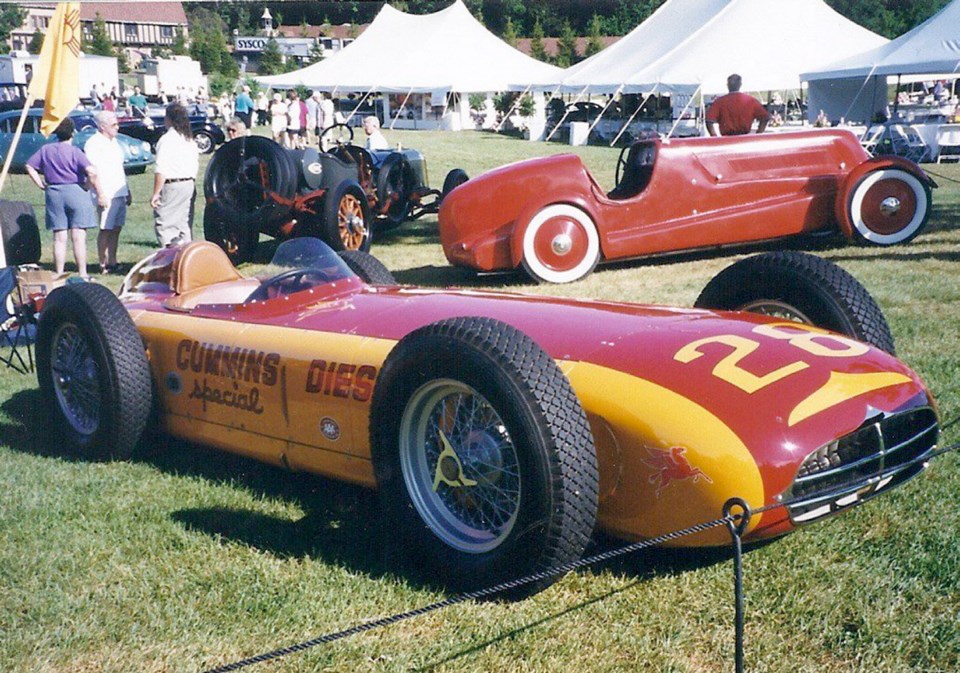While diesel engines are famous for long life and fuel economy, for years they were not known for high performance, although Audi recently shattered the performance barrier with its highly successful R10 diesel racer. Turbocharging and very high-pressure fuel injection now make diesels virtually as fast as gasoline engines.
But back when diesels were still smelly, smoky, noisy and slow, it may be surprising to learn that diesel cars ran in the famous Indianapolis 500 race, not once, but four times, and did surprisingly well.
The Indy diesel effort was mounted by Clessie L. Cummins, who had added diesel engines to his Columbus, Ind., machine-shop business in 1919. He launched the Cummins Engine Co. with single-cylinder engines and soon expanded into bigger industrial and marine units.
In 1935, Cummins convinced automaker Auburn to offer a diesel-powered model. Alas, Auburn went broke before this came about, and it fell to Mercedes-Benz to introduce the world’s first diesel production car in 1936, the 260D.
Cummins was a racing enthusiast, and Indy was a natural to publicize his diesel’s durability. He knew the diesel had potential because a Duesenberg with a Cummins diesel exceeded 160 kilometres per hour at Daytona Beach in February 1931.
American racing regulator American Automobile Association head Eddie Rickenbacker allowed a diesel racer into the 1931 race as an experiment, with the stipulation that it average at least 113 km/h. Cummins easily complied, qualifying at more than 156 km/h, albeit the slowest qualifier.
The diesel’s mission was to demonstrate its durability and economy, which it did superbly by running the entire 500 miles (805 km) non-stop, averaging 139 km/h and finishing 13th.
Cummins came back in 1934 with two cars. Because some of his engineers favoured two-stroke engines while others preferred four-strokes, Cummins entered supercharged four-cylinder versions of each. Both qualified, the two-stroke at 170 km/h and the four-stroke at 165 km/h. They were the slowest in the field, but they both got in.
The four-stroke retired after 81 laps with transmission failure and the two-stroke finished 12th, last, at 142 km/h. On the surface, the two-stroke principle seemed triumphant, but post-race tear-downs revealed the two-stroke to be in very poor condition. The four-stroke, however, was excellent, and Cummins thereafter concentrated solely on four-stroke engines.
Cummins didn’t return to Indy until after the Second World War. To encourage some diversity, the AAA allowed diesel engines of up to 6.6 litres, whereas spark-ignition engines were limited to 4.5.
The 1950 Cummins racer’s six-cylinder diesel was modified by adding a 24-valve cylinder head and supercharging, and by lightening it with aluminum and magnesium components. Through much testing, they got it up to 340 horsepower. It qualified, barely, at 208 km/h in 33rd place, last position.
But the Cummins diesel was plagued by bad luck and retired at the 209-kilometre (130-mile) mark when a broken engine vibration damper caused supercharger failure.
Undaunted, Cummins returned in 1952 with a dramatic new car built by famed race-car builder Frank Kurtis. It was one of his new, ultra-low “roadster” racers with its hood line below the tire tops. With the headrest removed it could have run upside down! Testing done in the University of Kansas wind tunnel promised high performance.
The big inline-six diesel was laid on its right side to reduce frontal area and to lower the centre of gravity. The supercharger was replaced with a turbocharger, an Indy first, pushing horsepower to 380.
The Cummins startled the Indy establishment by qualifying fastest and winning the pole at 222 km/h. By kilometre 40 (mile 25) it was in sixth place, improved to fifth by kilometre 80 (mile 50), which it held until past the 161-km (100-mile) mark.
It ran strongly until kilometre 285 (mile 177) when the engine began smoking badly due to an over-rich mixture. This was caused by its low turbocharger intake ingesting so much rubber and debris from the track that it starved the turbocharger for air, forcing the Cummins to retire.
The ever-conservative Indy establishment sensed a threat to traditional spark-ignition engine and cancelled the diesel displacement advantage, making it no longer competitive. This would be the last diesel at Indy, but recent diesel-technology advances suggest it should try Indy again.
